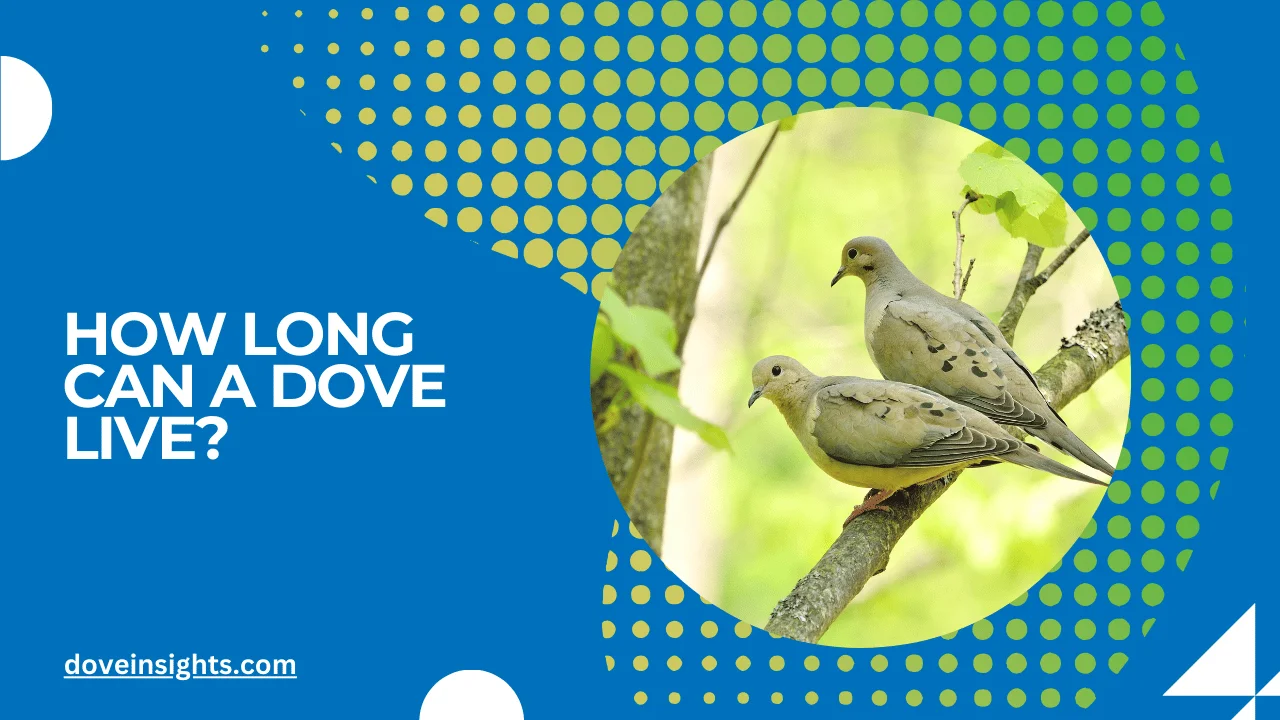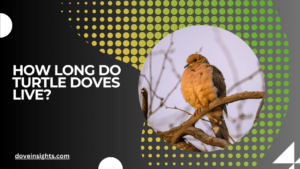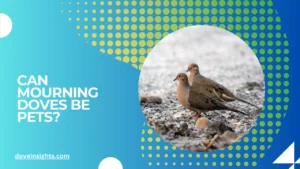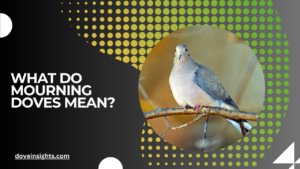Have you ever wondered how long a dove, a symbol of peace and serenity, can grace our world?
These gentle creatures, often seen fluttering in gardens or perching peacefully on rooftops, hold a fascinating story about their lifespan. From the fleeting lives of wild doves to the extended years of those kept in captivity, the lifespan of a dove is shaped by numerous factors, including environment, diet, and predation.
Understanding the longevity of doves is more than just a matter of curiosity. It helps bird enthusiasts, pet owners, and conservationists better care for them and appreciate their unique life cycles.
For instance, while some doves live barely a year in the wild due to predators, disease, and environmental challenges, others, especially those cared for by humans, can thrive for decades. This fascinating variation opens the door to questions about what truly impacts their longevity.
In this article, we will explore how long doves live in different conditions, what influences their lifespan, and practical tips to enhance their lives, whether in the wild, as pets, or in urban settings.
Let’s dive deep into the delicate world of doves and discover the secrets behind their survival and grace.
Contents
Overview of Dove Lifespan in the Wild
The lifespan of wild doves varies based on species and environmental factors. Common species like the Mourning Dove, Eurasian Collared Dove, and Rock Dove typically live between 1 and 5 years in the wild. However, predation, diseases, and harsh weather conditions often limit their survival.
For instance, Mourning Doves may not live beyond one or two years due to threats from hawks or cats. Wild doves face challenges from habitat destruction, which further impacts their chances of living longer lives.
During the breeding season, survival rates often drop as they are more vulnerable to predation when caring for young. Seasonal changes also influence their survival, with cold winters presenting significant challenges to their health and food availability, while warm months can provide more abundant resources for foraging.
Understanding these challenges helps explain the average lifespan of wild doves and why they face such significant threats in nature.
Lifespan of Captive Doves
In contrast to their wild counterparts, captive doves often enjoy longer lifespans. The average lifespan of a dove kept as a pet or in a controlled environment can range from 10 to 15 years, and in some cases, they can live even longer.
The key factor contributing to this extended lifespan is the reduced environmental stress they experience. Without the threats of predators and the difficulties of searching for food, captive doves have a much higher chance of survival. Proper diet, such as commercial dove mixes, fresh fruits, and vegetables, plays a crucial role in maintaining their health.
Additionally, veterinary care, including routine health checks and vaccinations, ensures that doves are protected from illnesses. A well-maintained and stress-free environment, free from predators and harsh weather, is key to allowing doves to live to their full potential.
Notable examples, such as the record-setting dove that lived over 30 years in captivity, show that with the right care, doves can live far beyond their wild counterparts.
Environmental and Behavioral Factors
The urbanization of environments has had a noticeable impact on dove longevity. Doves living in urban parks or near human habitats have access to abundant food and shelter but face risks from traffic, pollution, and the constant presence of predators like hawks and domestic cats.
Despite these risks, urban doves are often able to thrive due to their adaptability and ability to find food scraps or human-provided feeding stations. Doves’ behavioral adaptations also play a role in increasing their survival.
For example, doves are known for nesting in protected areas such as high tree branches, building structures, or rooftops, keeping them safe from ground predators. They are also social birds, often living in flocks that provide some level of protection against threats.
However, predator pressures like hawks and larger birds of prey are a constant threat, particularly during the nesting season when doves are more vulnerable.
Understanding these environmental and behavioral factors can help explain how doves navigate their survival in urban settings.
Caring for Pet Doves
Caring for pet doves involves several key practices to ensure they live long, healthy lives. The first step is to provide a proper diet, which should include high-quality dove food mixes, seeds, grains, and fresh fruits and vegetables.
A balanced diet is essential for maintaining feather quality and preventing nutrient deficiencies.
Housing is another important factor. Doves should be housed in a safe and spacious environment, such as an outdoor aviary, where they can fly freely and exercise. Regular veterinary check-ups are essential for monitoring their health, ensuring they remain disease-free, and preventing potential issues like obesity or malnutrition.
Additionally, pet doves should have access to social interaction. Doves are social animals, and isolation can lead to stress and behavioral problems, affecting their overall health.
Common mistakes, like overfeeding or neglecting exercise, can shorten their lifespan, so it is important to follow a proper care regimen. By understanding the specific needs of pet doves, owners can significantly extend their doves’ lifespans.
Conservation Efforts and How You Can Help
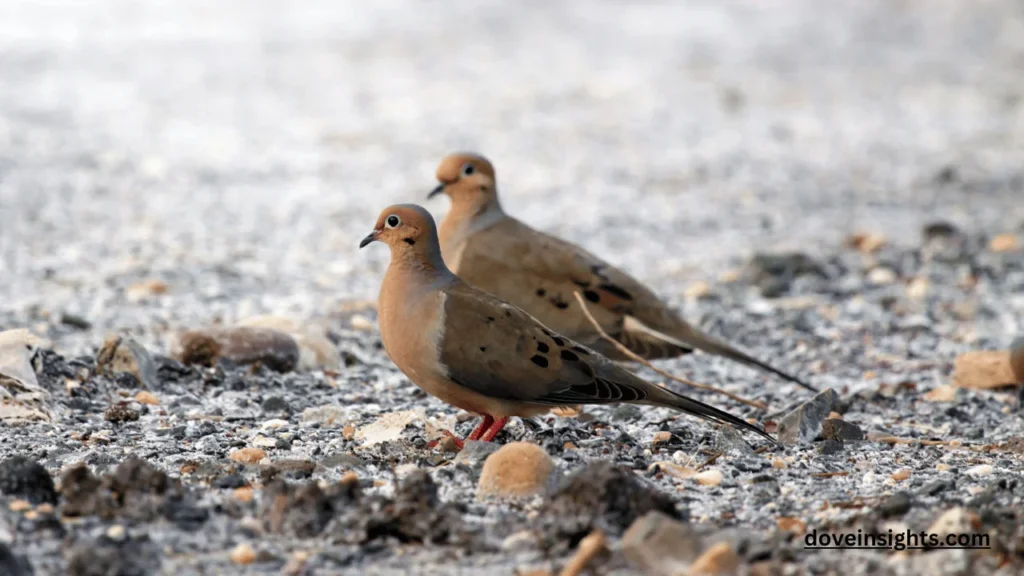
As wild dove populations face growing challenges from habitat destruction and environmental pressures, conservation efforts play a crucial role in supporting their survival.
Efforts to protect natural habitats are essential, particularly for species like the Mourning Dove, which relies on open fields and forests for nesting and foraging. Urban dwellers can contribute by providing food, water, and shelter in their backyards to create dove-friendly environments.
Planting native shrubs, berry bushes, and seed-producing flowers can provide a natural food source for doves, helping to maintain their populations. Additionally, supporting organizations dedicated to bird conservation and habitat restoration can help mitigate the environmental risks that doves face.
By encouraging sustainable practices and reducing threats like pollution and deforestation, we can help ensure that doves continue to thrive in the wild and in urban areas.
Conclusion
In conclusion, doves, whether living in the wild, captivity, or urban settings, have varied lifespans that are influenced by numerous factors, including environmental conditions, diet, and care.
While wild doves face numerous challenges such as predation and habitat loss, captive doves can live much longer due to reduced environmental stress and proper care.
The environmental and behavioral factors, such as urbanization and predator threats, significantly impact dove longevity, while pet dove care involves ensuring a balanced diet, proper housing, and regular veterinary visits.
Conservation efforts are essential to protect wild dove populations and provide opportunities for these birds to flourish.
By understanding the factors that influence dove longevity, we can contribute to their well-being, whether by creating dove-friendly spaces or providing proper care for pet doves.
The peace and beauty that doves bring to our world is worth preserving, and our actions can play a vital role in ensuring that these remarkable creatures thrive for years to come.
FAQ’s
How long do doves live in the wild?
Wild doves typically live between 1 to 5 years. However, their lifespan can be significantly affected by factors such as predation, disease, and harsh environmental conditions. For instance, some species like the Mourning Dove face high mortality rates due to predators, which can reduce their life expectancy.
Can a pet dove live longer than a wild dove?
Yes, pet doves can live 10 to 15 years, and in some cases even longer, due to factors like regular veterinary care, a consistent diet, and protection from predators. The controlled environment of captivity removes many of the risks that wild doves face, contributing to their extended lifespan.
What factors influence how long a dove can live?
The lifespan of a dove is influenced by several factors, including diet, predation, environmental conditions, and whether the dove lives in the wild or captivity. In the wild, disease, predators, and the availability of food play major roles in their survival. In captivity, proper care such as a balanced diet, safe environment, and regular health checks contribute to their longevity.
How can I make my pet dove live longer?
To help your pet dove live a longer life, ensure they receive a balanced diet with fresh fruits, vegetables, and high-quality seeds. Provide a safe and spacious living environment, with plenty of opportunities to fly and exercise. Regular veterinary check-ups are also crucial to prevent health issues. Avoid overfeeding and ensure the dove has social interaction, as isolation can stress them out.
Why do wild doves have shorter lifespans than captive doves?
Wild doves face numerous threats that shorten their lifespan, such as predation by larger birds, diseases, and the challenges of foraging for food. Their natural habitat can be unpredictable, with seasonal changes that can affect food availability. On the other hand, captive doves are protected from these threats, leading to a longer lifespan.
Do doves ever live up to 30 years?
While it is rare, some captive doves have been known to live up to 30 years or even longer with exceptional care. This usually occurs under ideal conditions, where they receive proper nutrition, veterinary care, and a stress-free environment. Wild doves, however, typically do not live this long due to the natural risks they face.

